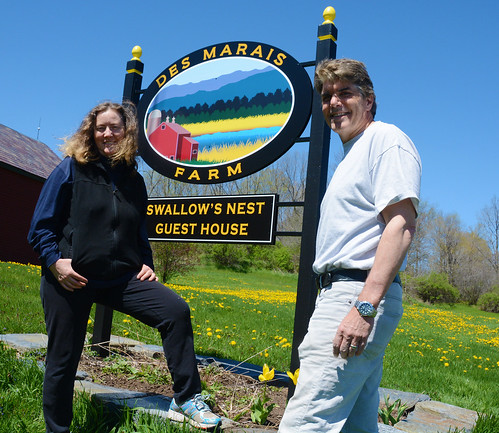
Wetlands and wildlife – they’re made for each other. Wetlands provide critical habitat, shelter food and places to raise young.
Landowners across the country are voluntarily restoring and protecting wetlands on private lands. This not only provides high-value wildlife habitat but provides many other benefits, such as cleaner water (wetlands act as filters!) and reduced flooding risk (they store water!).
When wildlife take up residence on your land, it is nature’s way of telling you that all is well. This is definitely the case for landowners Jim and Lyn Des Marais, who are now working to restore a 500-acre wetland in Vermont.
The couple took advantage of the Agricultural Conservation Easement Program, a Farm Bill conservation program that enables landowners to rehabilitate and protect wetland areas. The Des Marais property was once farmed, and the natural hydrology of the land was changed by ditches.

As part of restoring the wetland, the duo is plugging ditches, enabling water to flow again naturally throughout the wetland. In addition, they will create depressions in the landscape to enhance habitat for migratory waterfowl, shorebirds and amphibians.
The Des Marais wetland is ideal for birds because the farm offers a variety of habitats, including hay and grasslands, and as a result, the diversity of the birds is extensive. The wetland is home to ducks, rails, herons, bald eagles, peregrine falcon and other woodland hawks. They have also spotted bobolinks, meadowlarks, golden-winged warblers, blue herons, bald eagles, kingfishers and swallows.
Another winged species – the endangered Indiana bat – also depends on this Vermont wetland for survival. There’s a bat roost on neighboring property, and wetlands – like this one – provide fresh water and attract the insects they eat.

Landowners like the Des Marais’ are stepping up around the country to restore and protect wildlife. The work of private landowners is largely credited with the recovery of the Oregon chub. This small minnow was the first fish in the history of the Endangered Species Act (ESA) to be removed from the list of threatened and endangered list because of recovery. The fish greatly benefited from Oregon landowners who restored back channel wetlands in the Willamette River basin.
Similarly, the Amargosa toad rebounded when the citizens of Oasis Valley, Nevada came together to restore and protect riparian habitat along the Amargosa River. This toad is found in only one county in the world, limited to a 20-mile stretch along the river. In 2010, the U.S. Fish and Wildlife Service determined protections under the ESA weren’t needed because of the toad’s improvements on private lands.
USDA’s Natural Resources Conservation Service (NRCS) provides technical and financial assistance to help landowners plan and implement conservation practices that restore and protect wetlands. Over the past 24 years, landowners have protected nearly 2.7 million acres of wetlands through 14,500 easements with the help of NRCS.
Water, including wetland habitats, gives wildlife. We salute the Des Marais family of Vermont, and the thousands of other private landowners who voluntarily take actions every day to protect, restore and enhance wetlands and wildlife habitat.




